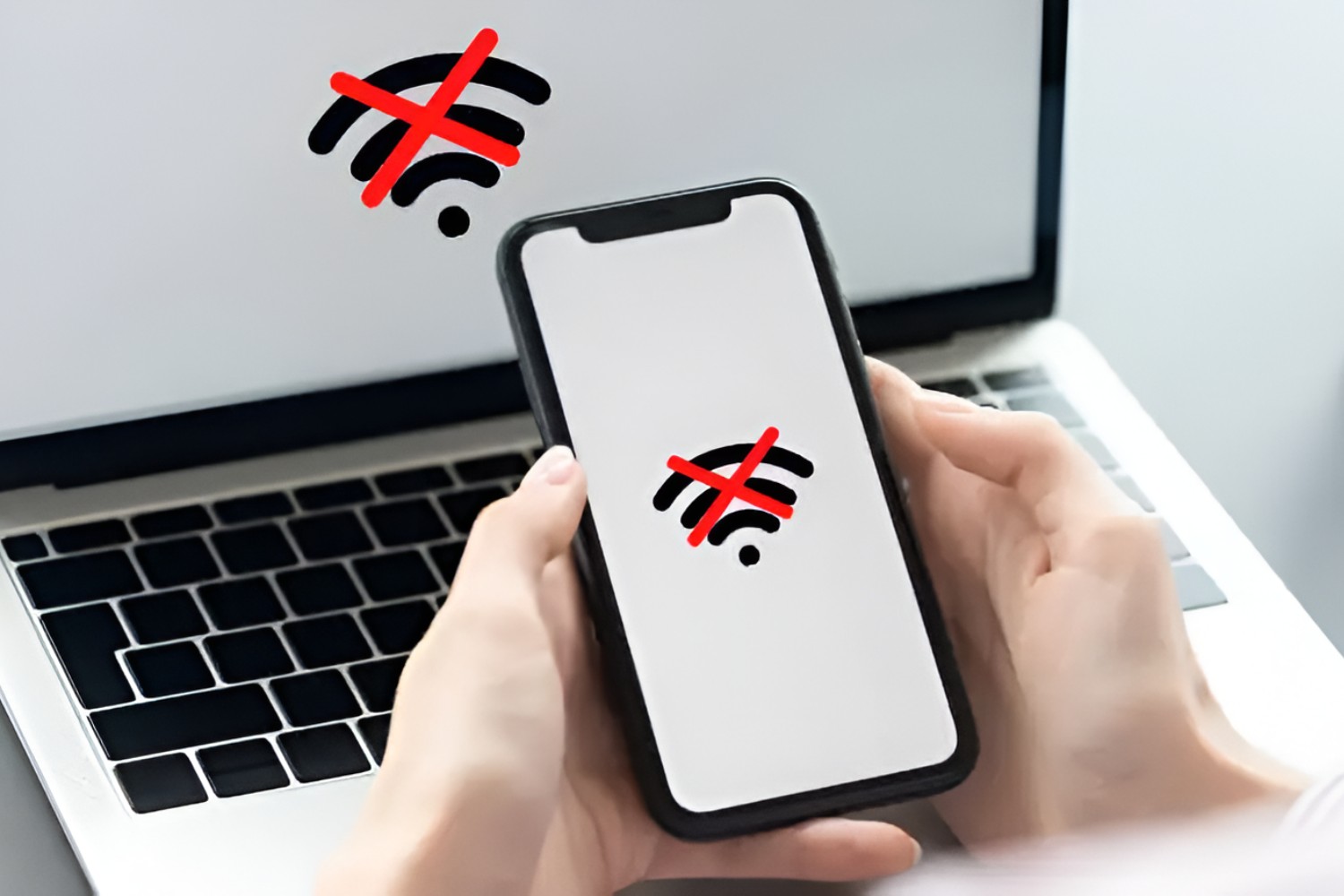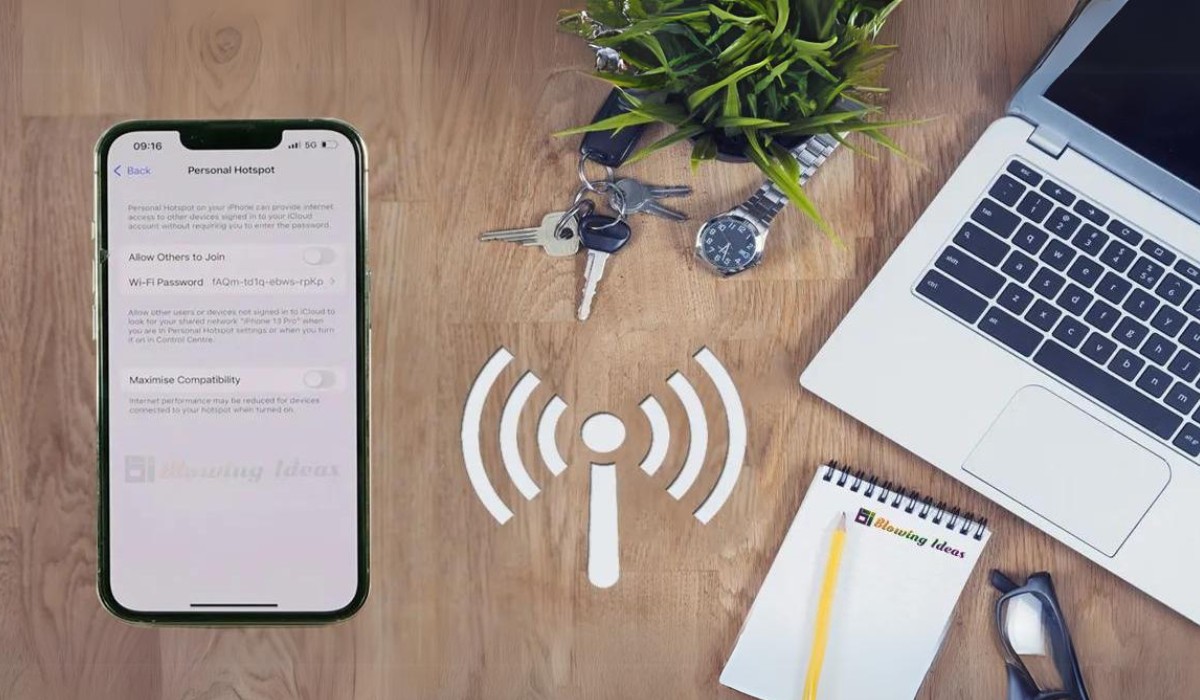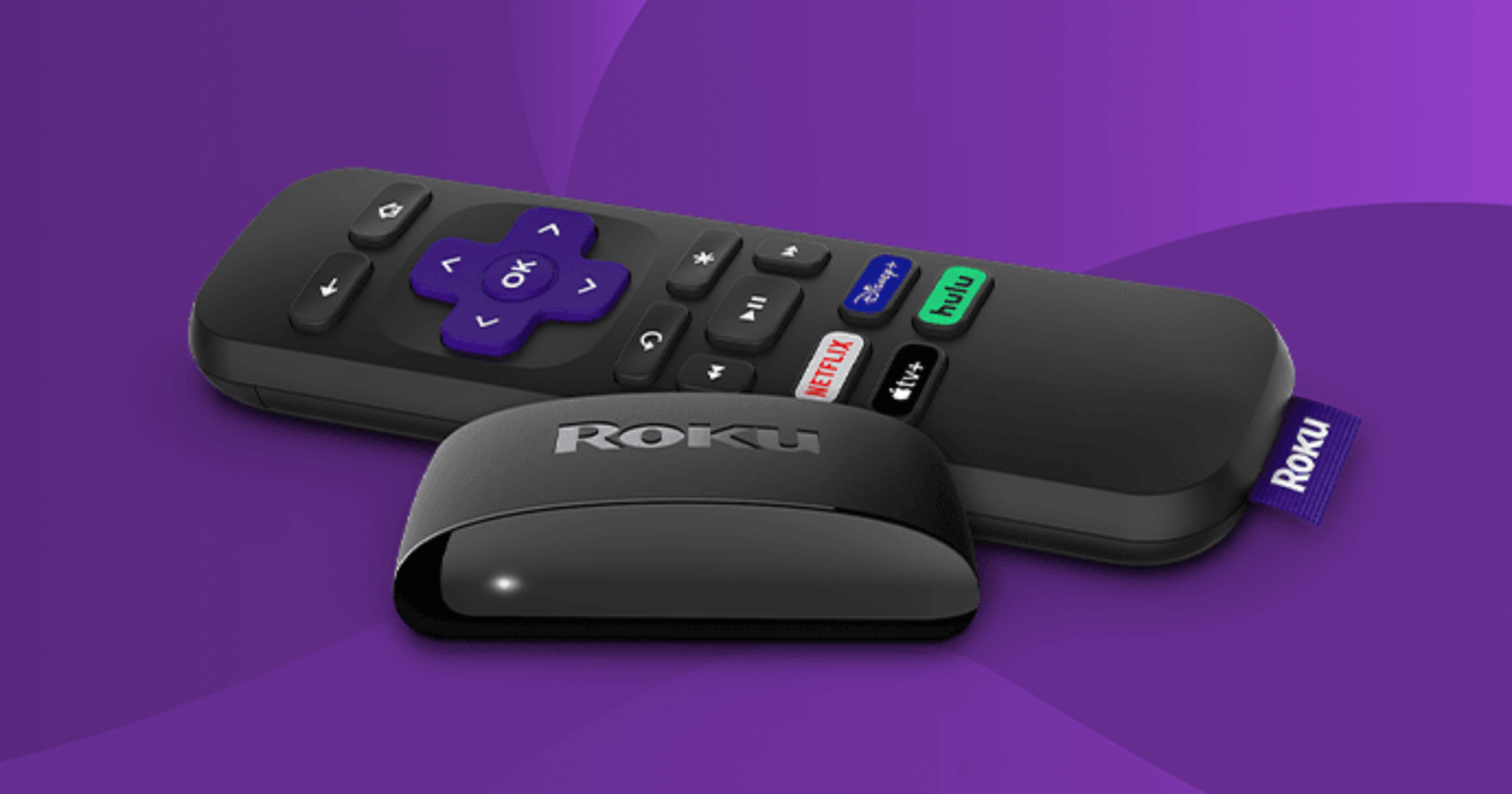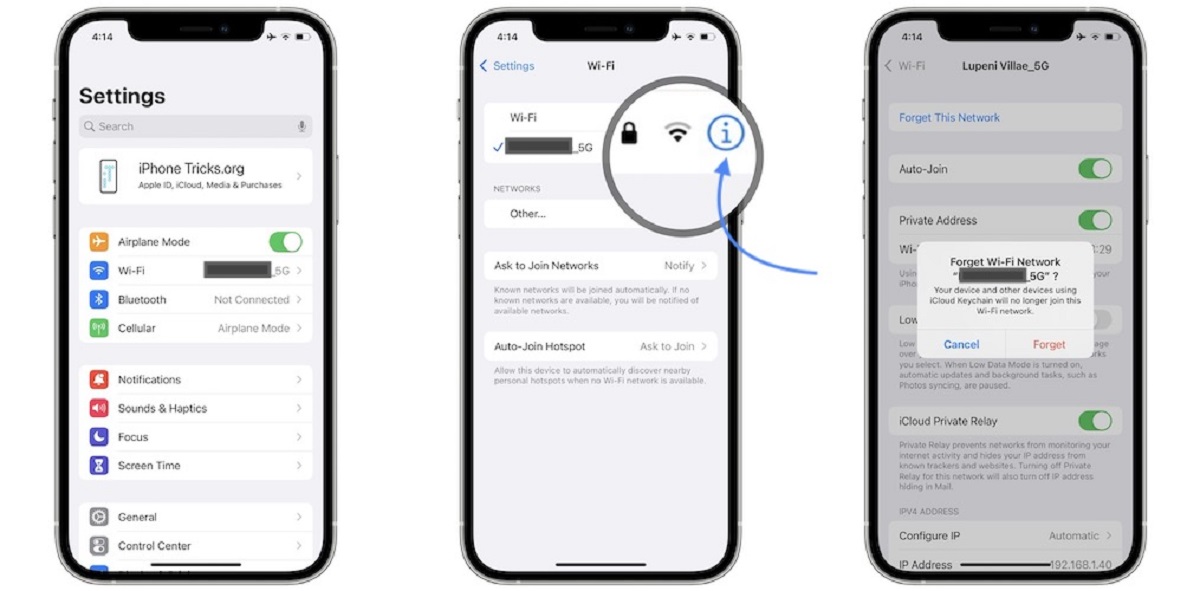Introduction
In today's fast-paced digital world, staying connected is more important than ever. Whether you're working remotely, streaming your favorite shows, or simply staying in touch with loved ones, a reliable internet connection is crucial. Hotspots have become a popular solution for accessing the internet on the go, offering flexibility and convenience. However, despite their convenience, hotspot disconnection issues can be a frustrating and disruptive experience.
When your hotspot keeps disconnecting, it can hinder productivity, interrupt streaming sessions, and lead to a sense of annoyance. Understanding the root causes of hotspot disconnection problems is the first step towards finding effective solutions. By identifying and addressing these issues, you can enjoy a seamless and uninterrupted online experience.
In this comprehensive guide, we will delve into the common causes of hotspot disconnection and provide practical tips for troubleshooting and resolving these issues. Whether you're using a mobile hotspot, a portable router, or a tethered connection from your smartphone, the information presented here will empower you to overcome hotspot disconnection challenges and make the most of your internet connectivity.
So, if you've ever found yourself frustrated by frequent hotspot disconnections, fret not. This guide is designed to equip you with the knowledge and strategies needed to tackle hotspot disconnection issues head-on. By the time you've finished reading, you'll be well-prepared to identify, troubleshoot, and resolve hotspot disconnection problems, ensuring a smoother and more reliable online experience. Let's dive in and unravel the mysteries of hotspot disconnection, empowering you to take control of your internet connectivity.
Understanding Hotspot Disconnection Issues
Hotspot disconnection issues can be a source of frustration and inconvenience, disrupting various online activities and hampering productivity. Understanding the underlying causes of these disruptions is essential for effectively addressing and resolving hotspot disconnection problems.
One of the primary factors contributing to hotspot disconnection is signal interference. When multiple devices compete for the same wireless frequency, signal interference can occur, leading to intermittent disconnections. This interference can stem from electronic devices, neighboring Wi-Fi networks, or physical obstructions that impede the wireless signal's strength and consistency.
Moreover, network congestion can also play a significant role in hotspot disconnection issues. In densely populated areas or locations with high network traffic, such as public venues or urban settings, the sheer volume of connected devices can strain the network, resulting in intermittent disconnections and reduced performance.
Additionally, the distance between the connected device and the hotspot can impact the stability of the connection. When the device is too far from the hotspot, the signal strength diminishes, increasing the likelihood of disconnections. This is particularly relevant in scenarios where users are attempting to connect to hotspots from a considerable distance, such as in large homes or outdoor settings.
Furthermore, software and firmware issues within the hotspot device or the connected devices can contribute to disconnection problems. Outdated firmware, incompatible drivers, or software glitches can disrupt the seamless flow of data, leading to frequent disconnections and interruptions.
Understanding these underlying issues is crucial for effectively troubleshooting and resolving hotspot disconnection problems. By identifying the specific factors contributing to the disruptions, users can implement targeted solutions to enhance the stability and reliability of their hotspot connections.
In the following sections, we will delve into the common causes of hotspot disconnection and provide practical tips for troubleshooting and resolving these issues, empowering users to regain control over their internet connectivity and enjoy uninterrupted online experiences.
Common Causes of Hotspot Disconnection
Hotspot disconnection issues can stem from a variety of factors, each contributing to the frustrating experience of intermittent connectivity disruptions. Understanding these common causes is essential for effectively addressing and resolving hotspot disconnection problems. Here are the primary factors that can lead to hotspot disconnections:
-
Signal Interference: One of the leading causes of hotspot disconnection is signal interference. This occurs when multiple devices compete for the same wireless frequency, leading to disruptions in the signal transmission. Signal interference can result from various sources, including electronic devices, neighboring Wi-Fi networks, and physical obstructions such as walls, furniture, or other structural elements that impede the wireless signal's strength and consistency. Identifying and mitigating sources of signal interference is crucial for stabilizing hotspot connections.
-
Network Congestion: In areas with high network traffic or densely populated locations, network congestion can contribute to hotspot disconnection issues. When numerous devices are connected to the same network, such as in public venues, urban settings, or shared workspaces, the network may become strained, leading to intermittent disconnections and reduced performance. Understanding the impact of network congestion on hotspot stability is essential for implementing strategies to mitigate its effects.
-
Distance from Hotspot: The distance between the connected device and the hotspot can significantly influence the stability of the connection. When the device is located far from the hotspot, the signal strength diminishes, increasing the likelihood of disconnections. This is particularly relevant in scenarios where users attempt to connect to hotspots from considerable distances, such as in large homes, outdoor settings, or expansive work environments. Addressing distance-related connectivity challenges is crucial for ensuring consistent and reliable hotspot connections.
-
Software and Firmware Issues: Disruptions in hotspot connectivity can also result from software and firmware-related issues within the hotspot device or the connected devices. Outdated firmware, incompatible drivers, or software glitches can disrupt the seamless flow of data, leading to frequent disconnections and interruptions. Identifying and resolving software and firmware-related issues is essential for maintaining the stability and performance of hotspot connections.
By understanding these common causes of hotspot disconnection, users can take proactive steps to address and mitigate these issues, ultimately enhancing the stability and reliability of their hotspot connections. In the subsequent sections, we will explore practical tips for troubleshooting and resolving hotspot disconnection problems, empowering users to regain control over their internet connectivity and enjoy uninterrupted online experiences.
Tips for Fixing Hotspot Disconnection Issues
Addressing hotspot disconnection issues requires a proactive approach aimed at mitigating the underlying factors contributing to the disruptions. By implementing targeted strategies and best practices, users can effectively improve the stability and reliability of their hotspot connections. Here are practical tips for fixing hotspot disconnection issues:
1. Optimize Signal Strength:
- Position the hotspot device in a central location to maximize signal coverage.
- Minimize obstructions and interference by keeping the device away from electronic appliances and physical barriers.
2. Manage Network Congestion:
- If possible, switch to less congested Wi-Fi channels to reduce interference and improve connection stability.
- Consider using a 5GHz frequency band for reduced interference in densely populated areas.
3. Update Firmware and Drivers:
- Regularly check for firmware updates for the hotspot device and install them to ensure optimal performance.
- Update the drivers for connected devices to maintain compatibility and address software-related connectivity issues.
4. Utilize Signal Boosting Solutions:
- Consider using Wi-Fi range extenders or signal boosters to enhance the reach and strength of the hotspot signal, especially in larger environments or outdoor settings.
5. Monitor Device Distance:
- Be mindful of the distance between the connected device and the hotspot, ensuring that it remains within an optimal range for reliable connectivity.
6. Utilize Quality Hardware:
- Invest in high-quality hotspot devices and compatible peripherals to minimize hardware-related issues that can lead to disconnections.
7. Implement Power Management:
- Adjust power-saving settings on the hotspot device and connected devices to prevent automatic disconnections due to power conservation features.
8. Regularly Reboot Devices:
- Periodically reboot the hotspot device and connected devices to clear temporary glitches and refresh network connections.
9. Consider Alternative Hotspot Solutions:
- Explore alternative hotspot solutions, such as dedicated mobile hotspot devices or tethering to different devices, to determine the most reliable connectivity option.
By incorporating these tips into their hotspot usage practices, users can effectively mitigate common causes of disconnection and enhance the stability of their internet connections. These proactive measures empower users to take control of their hotspot connectivity, ensuring a smoother and more reliable online experience.
In the subsequent section, we will delve into troubleshooting techniques to further assist users in resolving hotspot disconnection problems.
Troubleshooting Hotspot Disconnection Problems
When encountering persistent hotspot disconnection issues, effective troubleshooting techniques can help identify and resolve underlying problems, ultimately leading to a more stable and reliable internet connection. Here are comprehensive troubleshooting strategies to address hotspot disconnection problems:
1. Signal Strength Analysis:
- Use signal analysis tools or smartphone apps to assess the strength and quality of the hotspot signal.
- Identify areas with weak signal coverage and make adjustments to optimize signal strength.
2. Network Diagnostic Tools:
- Utilize network diagnostic tools to identify potential sources of interference or congestion within the wireless network.
- Analyze network performance metrics to pinpoint areas for improvement.
3. Firmware and Software Checks:
- Verify that the hotspot device and connected devices have the latest firmware updates installed.
- Conduct thorough software checks to ensure compatibility and address any software-related connectivity issues.
4. Hardware Inspection:
- Inspect the physical components of the hotspot device and connected devices for any signs of damage or malfunction.
- Ensure that all hardware components are properly connected and functioning as intended.
5. Compatibility Testing:
- Test the hotspot device with different types of connected devices to assess compatibility and identify potential issues with specific devices.
6. Network Configuration Review:
- Review the network configuration settings on the hotspot device and connected devices to ensure optimal performance and compatibility.
7. Reset and Reconfigure:
- Perform a factory reset on the hotspot device and reconfigure the settings from scratch to eliminate any potential configuration-related issues.
8. Contact Support:
- Reach out to the hotspot device manufacturer's support team for assistance in diagnosing and resolving persistent disconnection problems.
9. Alternative Connectivity Options:
- Explore alternative methods of connectivity, such as using a different hotspot device or leveraging tethering capabilities from a smartphone, to determine the most reliable option.
By systematically applying these troubleshooting techniques, users can pinpoint the root causes of hotspot disconnection problems and implement targeted solutions to restore stable and uninterrupted connectivity. Additionally, documenting the troubleshooting process and its outcomes can provide valuable insights for future hotspot usage and maintenance.
These comprehensive troubleshooting strategies empower users to take proactive steps in addressing hotspot disconnection issues, ultimately enhancing their online experiences and productivity.
Conclusion
In conclusion, hotspot disconnection issues can be a source of frustration and inconvenience, disrupting various online activities and hampering productivity. However, armed with a deeper understanding of the common causes and effective troubleshooting techniques, users can take proactive steps to mitigate these challenges and enjoy a more stable and reliable internet connection.
By recognizing the impact of signal interference, network congestion, distance from the hotspot, and software-related issues, users are better equipped to address these factors and implement targeted solutions. Optimizing signal strength, managing network congestion, updating firmware and drivers, and utilizing signal boosting solutions are among the proactive measures that can significantly improve hotspot stability.
Furthermore, the comprehensive troubleshooting strategies outlined provide a systematic approach to identifying and resolving hotspot disconnection problems. From signal strength analysis and network diagnostic tools to hardware inspection and compatibility testing, these techniques empower users to pinpoint the root causes of disruptions and implement effective solutions.
As technology continues to evolve, the reliance on mobile connectivity and hotspots is expected to grow. Therefore, the ability to troubleshoot and resolve hotspot disconnection issues is becoming increasingly valuable. By incorporating the tips and troubleshooting strategies outlined in this guide, users can navigate the complexities of hotspot connectivity with confidence, ensuring a smoother and more reliable online experience.
In essence, addressing hotspot disconnection issues requires a proactive and informed approach. By applying the knowledge and strategies presented in this guide, users can overcome the challenges associated with intermittent connectivity and embrace the convenience and flexibility that hotspots offer. With a deeper understanding of the factors influencing hotspot stability and the tools to troubleshoot and resolve disruptions, users can reclaim control over their internet connectivity, leading to enhanced productivity and seamless online experiences.

























